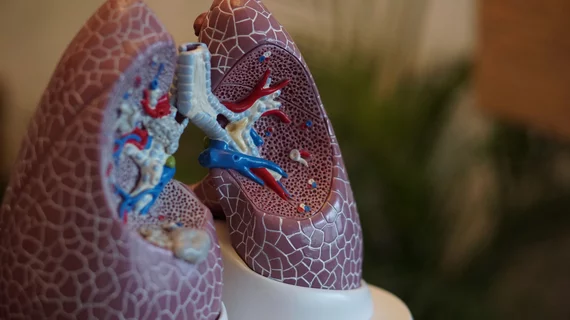Physicians who only utilize imaging to assess potential cases of chronic obstructive pulmonary disease are doing a disservice to their patients, according to a new study, which highlights the importance of breathing tests in diagnosing this population.
Researchers from the U.K. analyzed nearly 1,000 individuals who underwent low-dose CT lung cancer screening as part of the larger Lung Screen Uptake Trial project. Their results, published March 13 in the Annals of the American Thoracic Society, highlight a number of undiagnosed cases of COPD and emphysema, largely due to an overemphasis on imaging and underutilization of breathing tests.
“Based on our findings, reliance on CT alone to diagnose COPD risks missing individuals who may actually have this condition, while over-diagnosing others,” Mamta Ruparel, MRCP, with the Lungs for Living Research Center, said in a statement. “Since individuals at risk for lung cancer are also at risk for COPD, we recommend including spirometry in low-dose CT lung cancer screening programs, in order to assist in making accurate diagnoses,” the group added later.
As part of their research, Ruparel and colleagues analyzed 986 smokers and ex-smokers, ages 60-75, who participated in a lung health check over a two-and-a-half-year period. Each received a breathing test, with airflow limitations graded according to consensus standards. Radiologists with special training in lung disease interpreted patients’ scans for COPD, classifying each as “none,” “mild,” “moderate” or “severe.”
In total, 32% of patients with “undiagnosed COPD”—based on spirometry results and self-reported history—had no emphysema on their CT scans. Fifty-seven percent had pre-bronchodilator spirometry “consistent” with COPD. Another 67% had no prior history of the lung disease and were deemed “undiagnosed.”
Concluding their study, the researchers suggested that clinicians incorporate spirometry findings into low-dose CT screening to better identify those with the chronic breathing illness.
“This study highlights that, while the finding of emphysema was fairly common in this population of current or past heavy smokers who were at risk of lung cancer, the physiological changes of airway obstruction found through spirometry was the strongest signal of the presence of respiratory symptoms and thus potentially clinically relevant COPD,” the researchers concluded.

